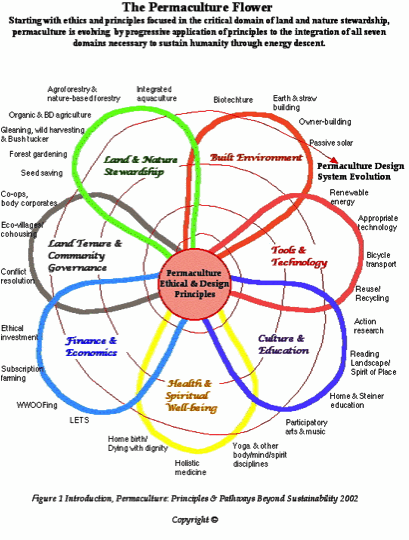When we talk about regenerative community solutions, what we’re talking about are the outcomes of a significant transformation in the way we relate to the world — such that rather than degrading the regenerative capacity of nature, our enterprises naturally seek to enhance it. We can call such companies “social enterprises,” though in reality all companies should recognize that they are social enterprises, and start living up to their regenerative potential. As Harvard economist Michael Porter has argued, every company can and should create social value, because it’s good for business. And when enterprises are creating social value, it’s also good for communities.
Every community has a unique character, but it also shares some basic needs with every other human community: including the need to have a vision, mission, and purpose that matches the unique character of the place. Communities are living ecosystems. They may be thriving or they may be struggling, and this seriously impacts the health of their constituents. Repairing the damage that we have caused to certain communities — including many older urban communities — has proven a great deal more difficult to remedy than merely providing them with a more sustainable and resilient infrastructure, but the latter would clearly help, and be worthy of investment.
This leads us to propose more self-sufficiency for communities at all levels, including financially. Each community needs to engage in some form of “transition,” whether formally associated with the Transition Movement or not, where new practices and institutions are established that take care of regenerating the bioregional ecosystem. Some of these already exist, such as the “waterkeepers” organizations devoted to the major bays and harbors of New York and New Jersey. Similar organizations are needed for every living ecosystem, as advocates, and stewards, and guardians.
Funding such organizations in an era of massive deficits is problematic, however — which has led us to propose a new currency, created by the exchange of credit between companies and individuals related to the creation of sustainable value. What this does is recognize the value that is already being created, e.g., by companies engaging in more sustainable practices — and provide an incentive for others to follow suit.
Our goal is to offer tools, resources, and solutions to communities to develop new and more sustainable futures. We do this through a variety of engagements, working alone or in partnership with other groups, and supporting projects with our own and others’ resources. The core of our methodology is what we call “community permaculture design” — a holistic revisioning of the ecologically wholesome possibilities within the context of a deep and ongoing engagement with stakeholders. This starts with what some of our colleagues and collaborators call “the story of place”: an informed recovery of the unique character, mission, and purpose of the community as a basis for reconceptualizing its ecologically integrated future.
Our colleagues at Regenesis (www.RegenesisGroup.com) take as one of their starting points this quotation from René Dubos:
“Spirit of place symbolizes the living ecological relationship between a particular location and the persons who have derived from it and added to it the various aspects of their humanness. The reason we are now desecrating nature is not because we use it to our ends, but because we commonly manipulate it without respect for the spirit of place.” ~ Rene Dubos
They go on to write:
At the heart of Regenerative Development is the concept of Place and Our Role in it.
Where sustainability is abstract, place is intimate, personal, filled with meaning and potential. Place arises from the rich connections among the earth, local nature and spirit. Regenerative development captures the unique rhythm and spirit of a place, partnering people and their place to create enduring value for all life. It helps people truly experience place, growing the caring required to make sustainability real.
The design philosophy we use is based on permaculture, biomimicry, and the perennial wisdom of planning for a more permanent culture, one that reflects our own rootedness in nature, that is grounded in the essence of place, and serves our human needs while serving the needs of all life for an integral cycle of birth, growth, reproduction, and death, free of toxic materials, artificial growth hormones, and endless conflict. We have come to appreciate that while competition plays an important role in human society (as it does in other species), cooperation and collaboration, known as synergy, are of much greater importance. The process of engagement leads naturally to the rediscovery of our inner purposes, as individuals, groups, and communities, and to the shift in perception that comes about when we frame the choices in the context of different assumptions, such as those of climate change and energy descent.
Our friend Paul Nick, one of the co-founders of the Permaculture Network of New Jersey, has provided us with this expanded version of the Permaculture Flower, from David Holmgren’s Permaculture Principles and Pathways Beyond Sustainability (2002):
 As Nick writes: “Permaculture is a direction,
As Nick writes: “Permaculture is a direction,
not a destination.”

